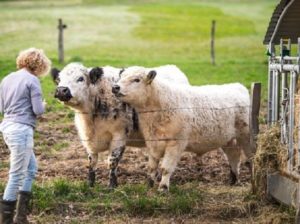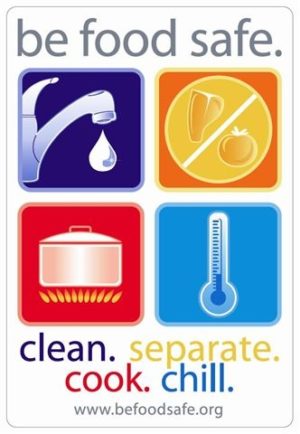
Both scenarios are weighed with the concern of antibiotic overuse, resistance and how the two may be intertwined. For some, the blame is on animal agriculture and for others, it’s on human medicine. The reality is somewhere in between. Regardless of our personal viewpoint, the issues have not gone unnoticed or ignored on the global or local scene. The use of antibiotics is the single most important factor leading to antibiotic resistance (the ability of bacteria to resist the effects of drugs) around the world.1
In the past week or so, a convergence of World One Health Day, newspaper articles and reports have brought to light once again that the solution to this issue should not be an “either or” but a “work together” approach to improve the situation. And we, as consumers, are at the center of that effort.
The Human Connection
Sometimes when we discover a “cure” to solve a problem, we love it to “death,” literally. With the discovery of penicillin in 1940, the perils of “pre-antibiotic” days were reduced but within just one year, the first penicillin-resistant Staphyloccus aureus was identified.2 Fast forward today and the Center of Disease Control and Prevention (CDC) reports that “at least 2 million people are infected with antibiotic-resistant bacteria, and at least 23,000 die as a result.” Why? As reported in my local newspaper last week, all of us (including health professionals) have often thought of antibiotics as cure-alls, using them too often or for the wrong reason without thinking about the side effects and the eventual consequence of antibiotic resistance.
The CDC estimates 30% of antibiotics prescribed during outpatient visits are unnecessary. Unfortunately, Kentucky medical providers rank number one nationwide for prescribing antibiotics.3 Across the U.S., healthcare systems like Owensboro Health (OH) have initiated Antimicrobial Stewardship Programs, a multidisciplinary approach of pharmacists, physicians, infection control specialists, health educators and laboratory staff, to ensure that the “right drug, right patient, right dosage, right time” philosophy is embodied throughout the system. Since 2012, the OH system reports that outcomes on reduction and proper usage are moving in the right direction.
Healthy Animals, Safe Food
Like humans, antibiotics may be used in meat animals and poultry when they become sick as it is important to restore the animal to good health and prevent the spread of disease on a farm. Using antibiotics cautiously is a priority of the meat and poultry industries as well as government agencies. Across all the meat and poultry producer organizations, quality assurance (QA) programs and training are in place to ensure responsible use of antibiotics and the initiation of alternate care practices when possible. According to a recent report,4 the poultry industry leads the way in overall reduction of antibiotic use but the majority of meat products also are being produced under their respective QA programs.

Antibiotic Resistance vs. Residue
For us, as consumers, it’s more than the health and welfare of the animal that concerns us. It’s about how their care affects the safety of our food and ultimately our health. Hence, the discussion of antibiotic resistance and residue rises to the top…with confusion. First of all, the terms are not interchangeable. They reflect separate issues. The presence of a residue in meat does not indicate antibacterial resistance.5
The real concern among animal health experts is not that humans could be exposed to antibiotics through the meat they eat, somehow developing a “tolerance” to that antibiotic. Rather, the concern is that overexposing bacteria in meat to antibiotics could make them antibiotic resistant.6 Hence why producers take the responsible use of antibiotics seriously. As Dr. Mike Apley, Kansas State University’s College of Veterinary Medicine professor, explains “Bacteria are like opossums; they live stupid and have a lot of offspring. It’s not that the bacteria outsmart us, but it’s that there are so many offspring with so many different mutations that the ones that can survive multiply, and we have a new, adapted population.”7 In 1997, the routine measurement and reporting of antibiotic resistance was enhanced with the creation of the National Antimicrobial Resistance Monitoring System. It is important to remember if antibiotic resistance is detected, that does not mean there are residues present.
When it comes to the inspection of meat products for antibiotic residue, the USDA Food Safety Inspection Service (FSIS) regularly tests meat to ensure the safety of the product. Antibiotic residue is the minute particles, parts per million or even billion, that may exist in a meat product of an animal that had been given antibiotics during its lifecycle. To ensure the safety of our meat products, three steps are taken:
1. Animals are withheld from production for an established period of time (30 days but depends on medication) when an antibiotic is given to ensure it has moved through the animal’s system.
2. The FDA has established strict tolerance levels to ensure safety of the meat.
3. USDA inspectors test animal carcasses in processing plants to ensure no residue violations exist.
It is important to remember if antibiotic residue is detected, it does not mean that bacteria resistant to that antibiotic are present.
Beyond the Label
So, do we need to worry about antibiotics in our meat? From my viewpoint, no. Farmers and ranchers follow strict measures to ensure their meat animals are raised in environments that prevent or limit the need for antibiotics. (Ask me about the shower in/out at a hog operation!) And if antibiotics are needed, strict guidelines and oversight are followed along with monitoring by government agencies.
But if concerns still exist, consumers can look for the “raised without antibiotics” or “no antibiotics added” labels, which are USDA-approved. But regardless of the label, we should always follow these four basic food safety guidelines:
-
- Clean — Wash hands and surfaces before, during and after food preparation
- Separate — Don’t cross contaminate raw and cooked meats
- Cook — Use a food thermometer and cook meats to correct temperatures
(145-165 degees depending on type) - Chill — Refrigerator leftovers promptly
Final Thought
Antibiotics have been a “cure” for both human and animal health for decades but we all must accept the reality: overuse is not the answer. We must take the One Health approach – look for new ways to manage ourselves and our food animals to reduce the need of antibiotics ever; recognize that human and animal health are intertwined; and when antibiotics are needed, limit. More is not better.
Disclosure: I served on the One Health Commission from 2012-2016 and moderated the IFIC Foundation Practitioner Roundtable in 2011.
References
1. Centers for Disease Control
2. Doyle M., Acheson D., Newland J., Dwelle T., Flynn W., Scott H., Singer R., Smith Edge M., Flood A. “Enhancing Practitioner Knowledge about Antibiotic Resistance: The Nexus of Human Health and Animal Health,” Food Protection Trends 2016: 5:390-390.
3. Messenger-Inquirer, Owensboro, Kentucky, October 31, 2019.
4. L. Brook, S. Roach, J. Halloran, M. Bohme, M. Wellington, L, Rogers, “Chain Reaction V: How Top Restaurants Rate in Reducing Antibiotics in their Beef Supply,” October 2019.
5. Animal Agriculture Alliance
6. “Media MythCrusher: Antibiotics in Livestock and Poultry,” North American Meat Institute.
7. Wes Ishmael, “6 antibiotic myths explained,” Beef Magazine, April 24, 2017.
Other Resources
1. America’s Pork Producers
2. Alan Newport, “Yes, Virginia, there could be antibiotics in your meat,” Beef Magazine, February 15, 2017.

